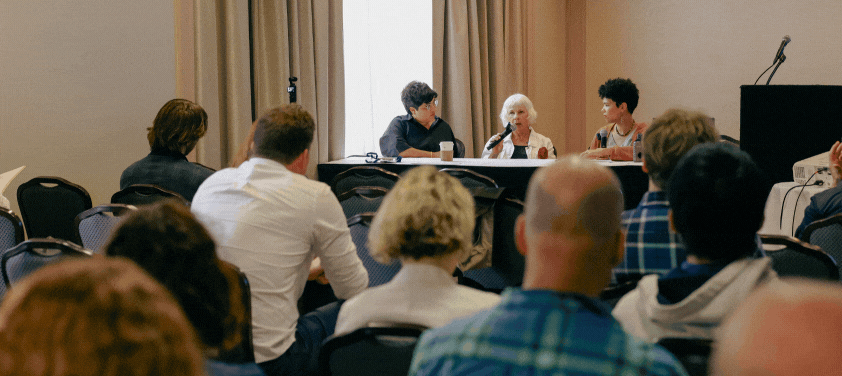The house is beautiful. The neighborhood is charming. The street? Designed like a drag strip—and it's launched multiple cars into one family's living room.
Read MoreJohn Gall’s home sits at the base of a T-intersection—a spot where, in theory, drivers are supposed to turn either left or right. But that’s not what keeps happening.
Read MoreThe latest fatality on a Charlottesville road was the last straw for Kevin Cox, but his efforts to make the area safer might land him twelve months of jailtime. What if cities saw actions like his not as crimes—but as calls for change?
By embracing the Crash Analysis Studio model, New Haven residents are shifting the conversation away from blame and towards preventing the next tragedy.
Read MoreWith a bit of paint and plastic, speeds on a Pittsburgh street dropped from 36 to 23 mph overnight. Here’s how the Pennsylvania city is making its streets safer.
Read MoreA new report shows pedestrian deaths dropped in 2024. But this “good news” comes with a huge asterisk: they're still 50% higher than they were a decade ago.
Read MoreEven as cities edge towards bankruptcy, crossing the street remains risky, and property values climb far out of step with wages, Strong Towns has built a movement that’s ready for this moment.
Read MoreFrom fast traffic to flower-filled crosswalks, a quiet revolution is reshaping Indianapolis’ streets. And it isn’t breaking the bank.
Read MoreA deadly hit-and-run in Fayetteville, North Carolina sparks urgent calls for safer streets and stronger action from city leaders.
Read MoreTired of excessive speeds on a neighborhood street, a community organization took matters into their own hands and saved lives in the process.
Read MoreFor years, Pittsburgh struggled with rising traffic fatalities. Instead of accepting these tragedies as inevitable or waiting for outside funding, city leaders acted decisively with the resources they had. Here's how.
Read MoreFletcher Williams was hit by three cars in a 13-month period — all within a half-mile radius in Bradenton, Florida. And he’s only one of many crash victims. The design of these streets is inhumanely dangerous and must be changed.
Read MoreThe East Coast Greenway spans 3,000 miles and is one of the most popular biking routes in the world. But as much as 65% of this route puts bikers in close contact with vehicles that are moving at high speeds. This has predictably terrible results.
Read MoreOn this episode of the Strong Towns Podcast, Chuck discusses safe streets advocacy with Amy Cohen, the co-founder and president of Families for Safe Streets.
Read MoreYou can’t call something an accident if you’re not doing anything to prevent it. You definitely can’t call it an accident if you intentionally put people in harm’s way through the design of your streets and the positioning of your infrastructure.
Read MoreTo make streets safer, we need to change the way people think about car crashes. And we need your help to do it. So, here’s the executive summary of the new “Beyond Blame” report, which shares the most important insights and recommendations from 18 months of Crash Analysis Studios.
Read MoreIt's time to embrace a new method for creating safer streets, but it can be daunting to move from supporting an idea to actually executing it. Here are people's top three concerns about conducting a Crash Analysis Studio and why you don't have to worry about them.
Read MoreIn this episode of the Strong Towns Podcast, Chuck explains why big, risky gambles often fail when applied to complex problems. He uses V2X (vehicle-to-everything) technology as a recent example of this kind of gamble.
Read MoreDiscussions of kids’ safety are often limited to what they should do, like wearing helmets. While wearing a helmet may make them a bit safer, kids will never be as safe as they could be until adults address the infrastructural issues that put them in so much danger.
Read MorePhiladelphia's school district is paying parents to drive their kids to class, but at what cost? This program leaves many families behind and actually makes streets more dangerous for children.
Read More



















